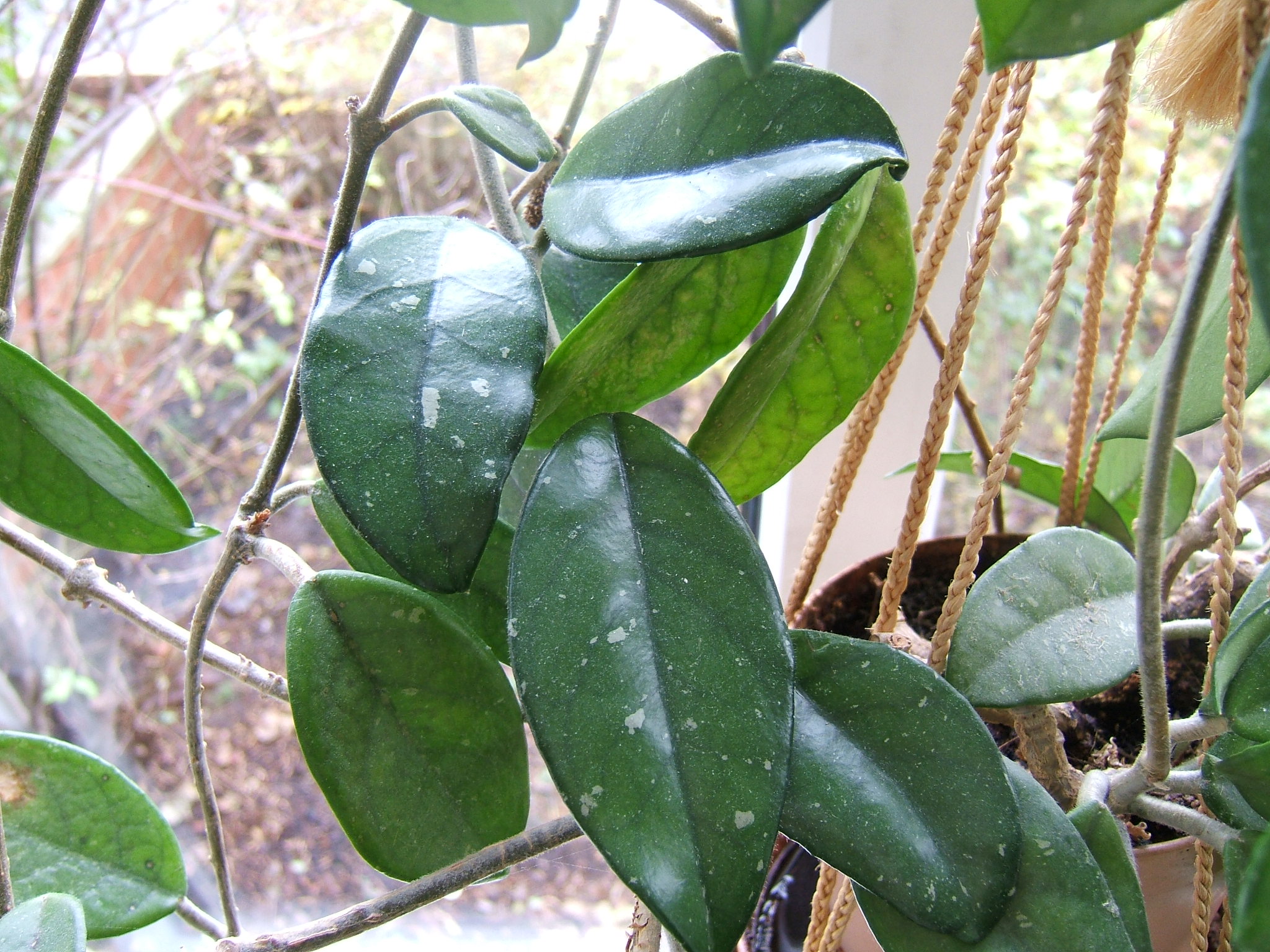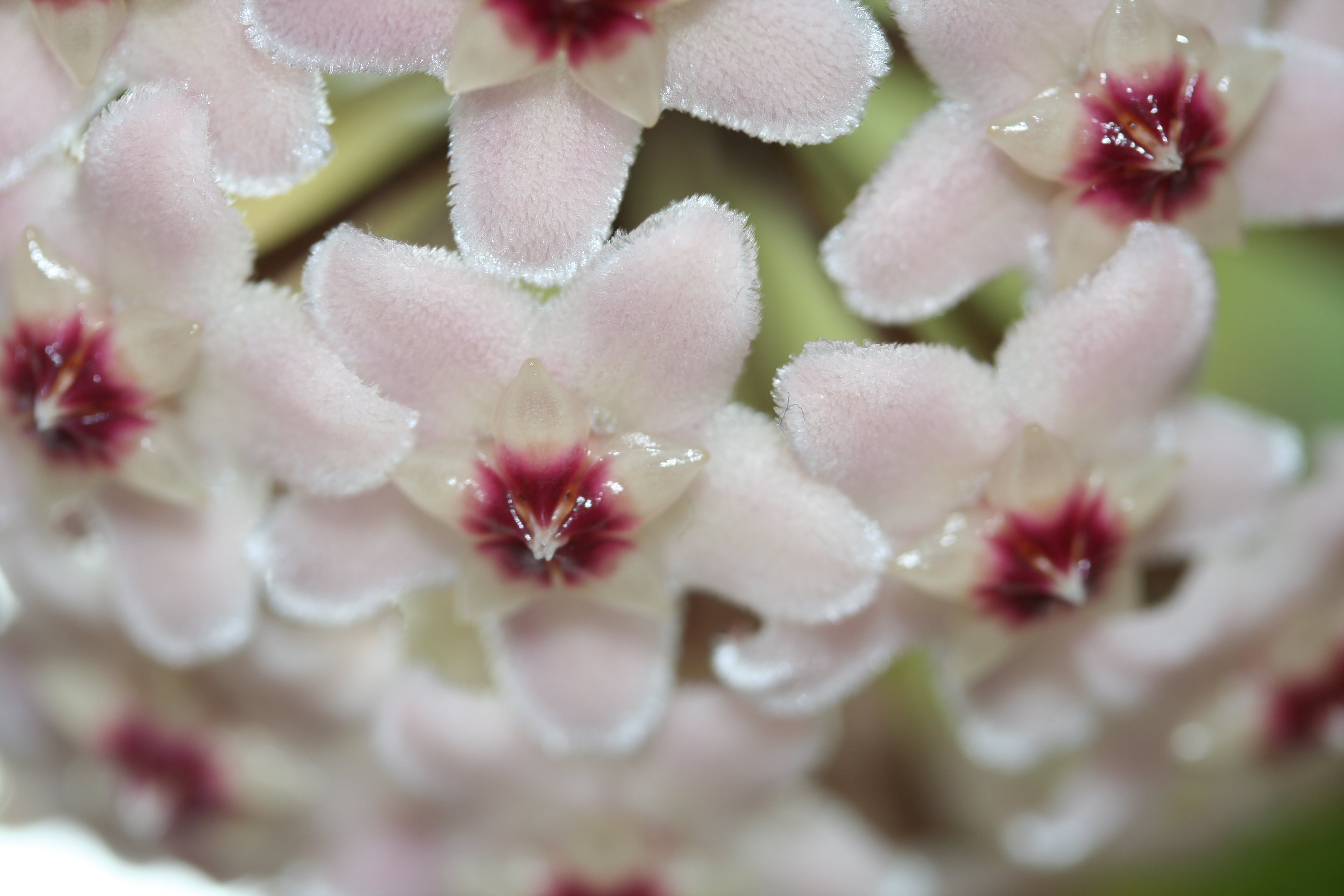Soil composition and ph levels for Hoya plant
When growing a Hoya plant (also known as wax flower or wax plant), it’s important to pay attention to your soil composition and ph levels.
Soil that is well draining, loamy, and rich in organic matter is best for Hoya plants, as having the right amount of air and water drainage will ensure the roots have room to grow.
Ideally, the pH level should be around 5.5-7.0 for young plants, and soil mixtures like coco coir with perlite or vermiculite are suggested by experts.
Additionally, when potting a Hoya plant make sure you use containers that have drainage holes to avoid root rot in overly wet soils.

Watering Hoya plant
Watering Hoya plants is not complicated. Water when the soil feels dry approximately 1-2 inches down and make sure to never allow the plant to soak in excess water.
It is best to avoid tap water if possible as watering with filtered or rainwater will produce better growth and fewer mineral deposits on leaves. Water thoroughly – but also modestly – and provide generous drainage every time. Try to pour slowly to distribute water evenly.
Are there flowers in Hoya plant?
The simple answer to the question “Are there flowers in Hoya plant?” is yes. While Hoya species vary in size and type, most are climbing vines loaded with white, pink or purple blooms.
The hoya of the Asclepiadaceae family can be a bush or twining vine, flowering from spring to winter in clusters at the end of long stems.
It makes an interesting addition to any home décor as well as a delightful climbing plant for outdoors.

Does Hoya plant produce fruits?
Does a Hoya plant produce fruits? The answer is no; these plants are more commonly known as wax plants because of their thick, waxy leaves as opposed toproducing any sort of fruit.
The plant itself is quite hardy and easy to care for making it popular among indoor gardeners. That being said, while they may not produce edible fruit, they will bloom beautiful flowers that can last up to several weeks.
Propagation of Hoya plant
Propagation of Hoya plant can be done through propagating cuttings, Air-layering and Propagating by leaf. Propagation of Hoya plant through
Propagating cuttings involves cutting the tendrils, stick them into the potting soil. To ensure that they are healthy enough to take root, they should be dug up with some roots intact.
Propagation through Air-layering requires a specific technique which encourages new roots to form on sections of aerial stems.
Finally, propagation of Hoya plant can also be done via propagating by leaf method which requires carefully removing several leaves from the healthy parent plant and placing them onto well-draining soil that is kept lightly moistened until new plants start emerging from them.

Pests and diseases in Hoya plant
Pests and diseases can be a real issue when cultivating Hoya plants. Pests like aphids, mealybugs, scale insects, mites, and whiteflies can damage the plant and stunt its growth.
Disease-wise, Hoya plants are quite resilient and rarely affected by general ones like root rot or powdery mildew – however they are vulnerable to some viral infections such as leaf curl.
Fortunately, pests and diseases in Hoya plants can be easily managed after early identification through proper care.
Pruning affected parts of the plant as well as spraying an organic insecticide solution should help with most cases of infestation.

Irritation to pets from Hoya plant
The Hoya plant is a popular, aesthetically pleasing houseplant which boasts many benefits…however, it can also come with one major downside – its sap can cause irritation to pets.
The sap of the Hoya plant is known to be toxic and can lead to burning around the mouth, difficulty chewing and swallowing, vomiting, coughing and even diarrhoea in cats and dogs if consumed.
Therefore, owners of the Hoya plant should ensure that their beloved pet does not have access to this dangerous foliage if they wish to avoid these potentially serious side effects.

Varieties of Hoya plant
Varieties of Hoya plants are known for their exotic, star-like blooms. The wide range of varieties provides a diverse set of choices for any gardener interested in adding this vibrant and long lasting plant to their garden.
Varieties include Hoya Carnosa, Hoya Pubicalyx, and Hoya Obovata, each with individualized aesthetics and bloom characteristics. Varieties are determined by bloom color, foliage size and shape, flower shape, length of bloom cycle and sun requirements.
With more than 300 species of Hoyas around the world, the Varieties of Hoya plants offer boundless possibilities for creating a unique and stunning outdoor oasis.
Growing Hoya plant in containers and pots
Growing a Hoya plant in containers and pots is an easy, inexpensive way to incorporate greenery into your home.
Container gardening is perfect for those with limited space or no access to gardening soil since all you need is the pot, the correct planting container, and a suitable potting mix.
Growing Hoya plants inside containers will keep them small and manageable, which makes it possible to display multiple plants in one container of varying sizes.
Growing Hoyas can help introduce fresh air as well as new aesthetics into your home.
Caring for Hoya plant
Caring for a Hoya plant does not need to be complicated. The simplest way to ensure good care for this evergreen vine is to provide it with plenty of indirect sunlight and a potting mix designed for epiphytic plants.
Watering should also be done as needed, allowing the soil surface of the pot to dry out slightly between waterings. Additionally, fertilizer can boost growth, but it should only be used occasionally and at half strength.
Pruning may also be necessary if the vine has become too long or dense.
By following these simple steps, any gardener can easily enjoy a healthy, low-maintenance Hoya plant indoors or out.

Companion plants for Hoya plant
Companion plants for Hoya plants can be beneficial in providing protection from pests, extra support and nutrients. Popular companion plants include Ficus, Rex Begonia and Chinese Evergreen.
These plants all provide necessary shelter to tropical flowering vines, like the Hoya plant. Additionally, they help to keep an even temperature while drawing away insects that could damage your Hoya plant.
Companion planting also encourages helpful pollination and soil fertility. Overall, having the right companion plants in the same pot as a Hoya plant is essential for its long-term health.
Planting and spacing for Hoya plant
Planting and spacing for the Hoya Plant is relatively simple. When setting up your hoya garden, it is important to bear in mind that Hoya plants thrive in indirect sunlight, so they should be placed in a spot with full sun but indirect light.
Plant your hoyas in containers filled with a mixture of soil and perlite. Plant them at least six inches apart to ensure adequate air flow between plants, and if planting more than one, space them at least two feet apart to ensure they have enough nutrients and water.
Once planted, train the vines onto trellises or other forms of support so that they do not vie for too much space on the ground.

Best planting time for Hoya plant
The best time to plant a Hoya plant is between April and October, when soil temperatures in the majority of areas are warm enough for successful germination.
Planting during this period also allows for a larger window of watering schedules, since you will not have to worry about water freezing in cold climates.
Additionally, the warmer soil temperatures typically result in quicker establishment of roots and shoot formation, leading to a more successful entry into growth for your young Hoya plant.
Benefits of Hoya plant
Hoya plants are a great choice of home decor, due to their captivating flowers, interesting shapes, and ease of growth.
Benefits of hoya plants include being resilient and low-maintenance – they do not require frequent watering or feeding and usually flower between spring and summer without needing additional sunlight. They have a variety of sizes which make them able to fit in any home setting.
Hoya plants can also be propagated from cuttings taken from an existing plant, meaning one can produce multiple Hoya for a backyard garden or interior landscape.
Overall, the beautiful ornamental foliage and blooms make this type of plant an ideal living decoration for both outdoor and indoor areas.

How long to grow Hoya plant?
Growing Hoya plants is a relatively easy process since they are considered to be low-maintenance. How long it takes for a Hoya plant to grow will depend on the variety, indoor or outdoor growing conditions, and individual care given.
Growing times can range from a few weeks to several months and sometimes even up to two years. As with any plant, adequate light and water are essential requirements for healthy growth.
Pruning your Hoya regularly can help promote faster growing but patience is still key when it comes to achieving optimal growth.